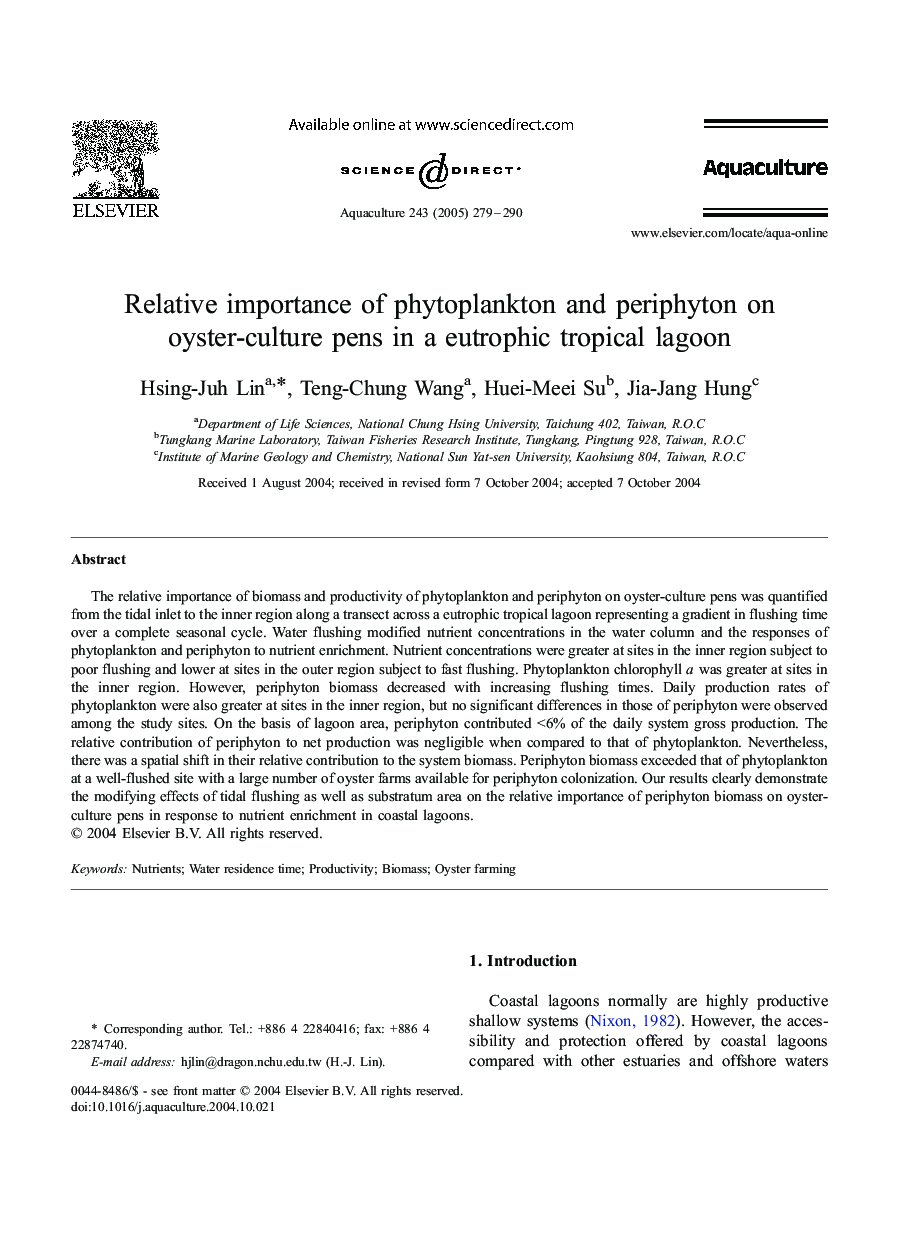| Article ID | Journal | Published Year | Pages | File Type |
|---|---|---|---|---|
| 8975009 | Aquaculture | 2005 | 12 Pages |
Abstract
The relative importance of biomass and productivity of phytoplankton and periphyton on oyster-culture pens was quantified from the tidal inlet to the inner region along a transect across a eutrophic tropical lagoon representing a gradient in flushing time over a complete seasonal cycle. Water flushing modified nutrient concentrations in the water column and the responses of phytoplankton and periphyton to nutrient enrichment. Nutrient concentrations were greater at sites in the inner region subject to poor flushing and lower at sites in the outer region subject to fast flushing. Phytoplankton chlorophyll a was greater at sites in the inner region. However, periphyton biomass decreased with increasing flushing times. Daily production rates of phytoplankton were also greater at sites in the inner region, but no significant differences in those of periphyton were observed among the study sites. On the basis of lagoon area, periphyton contributed <6% of the daily system gross production. The relative contribution of periphyton to net production was negligible when compared to that of phytoplankton. Nevertheless, there was a spatial shift in their relative contribution to the system biomass. Periphyton biomass exceeded that of phytoplankton at a well-flushed site with a large number of oyster farms available for periphyton colonization. Our results clearly demonstrate the modifying effects of tidal flushing as well as substratum area on the relative importance of periphyton biomass on oyster-culture pens in response to nutrient enrichment in coastal lagoons.
Related Topics
Life Sciences
Agricultural and Biological Sciences
Aquatic Science
Authors
Hsing-Juh Lin, Teng-Chung Wang, Huei-Meei Su, Jia-Jang Hung,
